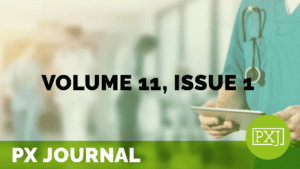Operationalizing Your PFAC: 7 Steps to Sustainability

Allison Chrestensen, Project Coordinator at Duke University Health System
Tiffany Christensen, Performance Improvement Specialist, North Carolina Quality Center
Along with the national focus on improving the patient experience, hospitals and health systems are working to incorporate the patient and family voice into every facet of the organization from quality improvement efforts to policies & procedures and governing boards. To formalize these efforts, CMS’s Partnership for Patients has developed five fundamental criteria to facilitate patient and family engagement (PFE) in healthcare organizations. One of these tactics is to develop a Patient and Family Advisory Council (PFAC), and the other is to include Patient and Family Advisors (PFAs) as representatives on quality improvement and hospital leadership boards. Private insurance companies across the country are also adjusting their reimbursements to align with these PFE recommendations. As the PFE movement continues to gain momentum, the importance of utilizing evidence-based approaches for engaging patients and families becomes even clearer.
Building an effective and sustainable PFAC that serves as a key resource for your organization’s quality improvement efforts requires comprehensive training and careful planning. This webinar provides an overview of the “7 Steps to Sustainability” and offers information on the “nuts and bolts” of creating and developing a PFAC program for those who are just beginning their journey. Attendees who have experience working with PFACs will benefit from the discussion on innovative ways to partner with patients and family members outside the meeting room. Participants will leave this training with a clear understanding of the necessary steps for establishing effective partnerships and for becoming a top PFE-performer among healthcare organizations.
Related content
-
 Culture & Leadership | Patient Family & Community Engagement
Culture & Leadership | Patient Family & Community EngagementNew Ways to Care
This webinar explores innovative models for best technical care, co-produced with patients and families, and also look at the impact that compassion and kindness can have on clinical outcomes, cost and patient experience. Maureen Bisognano, President Emerita and Senior Fellow, Institute for Healthcare Improvement Presentation slides *Headliner webinars are complimentary. Brought to you by:
Learn more -
 Patient Family & Community Engagement
Patient Family & Community EngagementA Patient’s Journey: Navigating Life with Type 1 Diabetes
We are all patients. This article represents my views from my personal experience with type 1 diabetes for 25 years, in combination with my professional experience over the past 10 years as I have worked in patient support, health promotion and improving the patients’ experience. I aim to provide an outlook on the patient perspective,
Learn more -
 Patient Family & Community Engagement
Patient Family & Community EngagementHelping Patients Navigate the Emergency Department: Assessing the Utility of a Poster Illustrating the Patient Journey
Patients often have limited understanding of the emergency department (ED) care process, which can increase anxiety, frustration, and confusion. This study implemented and assessed the usefulness of a poster explaining the ED care process. A large wall-mounted poster illustrating the patient journey was developed; two different data collection techniques were used. First, a QR code/URL
Learn more
